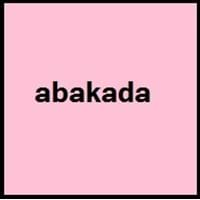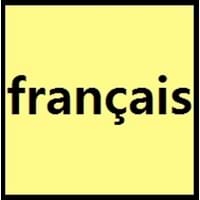Countries
Philippines
Belgium, Benin, Burkina Faso, Burundi, Cameroon, Canada, Central African Republic, Chad, Comoros, Congo, Cote d'Ivoire, Djibouti, Equatorial Guinea, France, Gabon, Guernesey, Guinea, Haiti, Italy, Jersey, Luxembourg, Madagascar, Mali, Mauritius, Monaco, Niger, Rwanda, Senegal, Seychelles, Switzerland, Togo, Vanuatu
National Language
Philippines
France
Second Language
Filipinos
Africa, Canada
Speaking Continents
Asia, Australia
Africa, Australia, Europe, North America, Oceania, Pacific, South America
Minority Language
Australia, Canada, Guam, Hong Kong, New Zealand, Singapore, United Kingdom
Brazil, Cambodia, United States of America, Vietnam
Regulated By
Komisyon sa Wikang Filipino, National Languages Committee
Académie française (French Academy), Office québécois de la langue française
Interesting Facts
- In 1593, "Doctrina Christiana" was first book written in two versions of Tagalog.
- The name "Tagalog" means "native to" and "river". "Tagalog"is derived from taga ilog, which means "inhabitants of the river".
- French is the only language, with English, that is taught in every country of the world.
- French is the top language in Culinary Scene.
Similar To
Filipino, Cebuano and Spanish Languages
Italian Language
Derived From
Not Available
Latin
Alphabets in
Tagalog-Alphabets.jpg#200
French-Alphabets.jpg#200
Writing Direction
Left-To-Right, Horizontal
Left-To-Right, Horizontal
Thank You
Salamat po
Merci
How Are You?
Kamusta ka na?
Comment allez-vous?
Good Night
Magandang gabi
bonne Nuit
Good Evening
Magandang gabi po
bonsoir
Good Afternoon
Magandang hapon po
bon Après-Midi
Good Morning
Magandang umaga po
Bonjour
Please
pakiusap
S'il vous plaît
Sorry
pinagsisisihan
désolé
I Love You
Iniibig kita
Je t'aime
Excuse Me
Ipagpaumanhin ninyo ako
Excuse Moi
Dialect 1
Batangas Tagalog
Quebec French
Where They Speak
Batangas, Gabon
New Brunswick, New England, Ontario, Quebec, Western Canada
How Many People Speak
Not Available
Dialect 2
Bisalog
African French
Where They Speak
Philippines
Africa
Dialect 3
Filipino
Swiss French
Where They Speak
Philippines
Northeast France, Switzerland
Native Name
Tagalog
français
Alternative Names
Filipino, Pilipino
Français
French Name
tagalog
français
German Name
Tagalog
Französisch
Pronunciation
[tɐˈɡaːloɡ]
[fʁɑ̃sɛ]
Ethnicity
Tagalog people
Not Available
Language Family
Austronesian Family
Indo-European Family
Subgroup
Indonesian
Romance
Branch
Not Available
Not Available
Early Forms
Proto-Philippine, Old Tagalog, Classical Tagalog, Tagalog
Old French, Middle French and French
Standard Forms
Filipino
Standard French
Signed Forms
Not Available
le Français Signé (Signed French, France)
Scope
Individual
Individual
ISO 639 6
Not Available
fras
Glottocode
taga1269
stan1290
Linguasphere
31-CKA
51-AAA-i
Language Type
Living
Living
Language Linguistic Typology
Object-Verb-Subject, Subject-Verb-Object, Verb-Object-Subject, Verb-Subject-Object
Subject-Verb-Object
Language Morphological Typology
Not Available
Fusional, Synthetic
Tagalog and French Greetings
People around the world use different languages to interact with each other. Even if we cannot communicate fluently in any language, it will always be beneficial to know about some of the common greetings or phrases from that language. This is where Tagalog and French greetings helps you to understand basic phrases in Tagalog and French language. Tagalog word for "Hello" is Kamusta or French word for "Thank You" is Merci. Find more of such common Tagalog Greetings and French Greetings. These greetings will help you to be more confident when conversing with natives that speak these languages.
Tagalog vs French Difficulty
The Tagalog vs French difficulty level basically depends on the number of Tagalog Alphabets and French Alphabets. Also the number of vowels and consonants in the language plays an important role in deciding the difficulty level of that language. The important points to be considered when we compare Tagalog and French are the origin, speaking countries, language family, different greetings, speaking population of these languages. Want to know in Tagalog and French, which language is harder to learn? Time required to learn Tagalog is 44 weeks while to learn French time required is 24 weeks.





